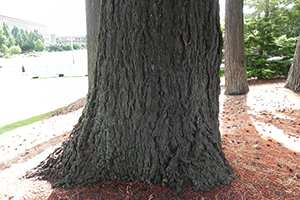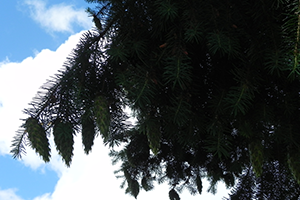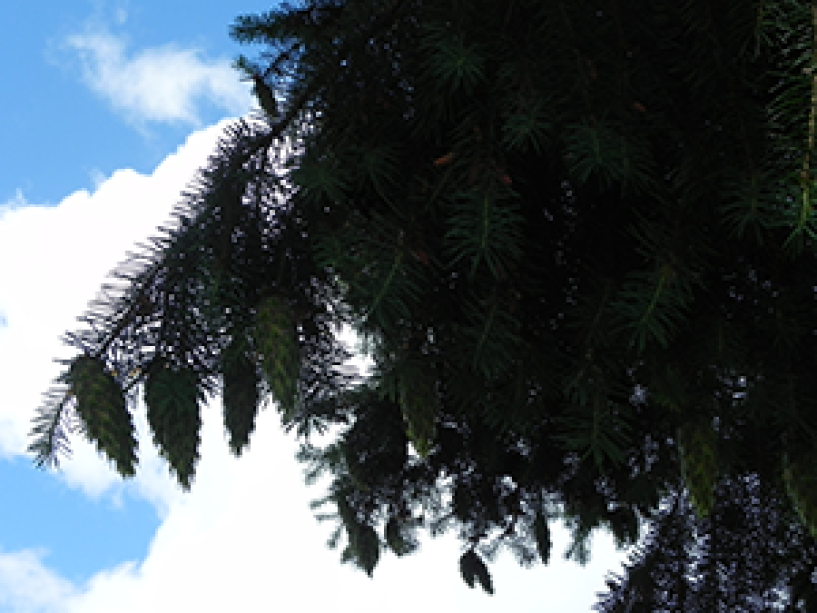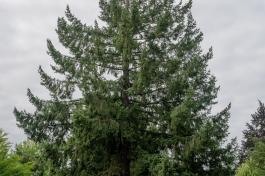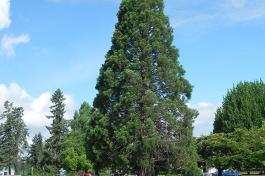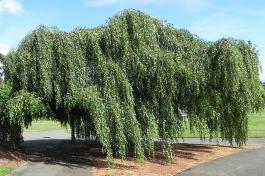Western Hemlock
Tsuga heterophylla
Learn about the Western Hemlock including when and why it was planted, how to identify it, and where to find it on campus.
Tree Facts
Traits
- Drooping new growth on tree top
- Feathery needles that are dark green on top and whitish underneath
- Produces large amounts of small cones
Native Range
- Coastal western North America
Story of the Tree
The western hemlock was designated Washington's state tree in 1947. It is an iconic member of the western Cascade Forest.
The western hemlock in Marathon Park is part of the 2002 National Tree Trust program, in which each state's capital city planted a tree to commemorate the National Tree Trust's 10 millionth tree milestone.
Western hemlocks live for hundreds of years. Their thick foliage provides shade for smaller plants that grow underneath them. In their native habitats, these trees are used to receiving a lot of water, but they can fall over during windstorms due to their shallow roots.


